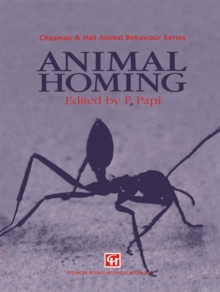
Animal Conflict PDF
by Felicity A. Huntingford
Part of the Chapman & Hall Animal Behaviour Series series
Description
In the past twenty years there have been many new developments in the study of animal behaviour: for example, more sophisticated methods of neurophysiology; more precise techniques for assessing hormonal levels; more accurate methods for studying animals in the wild; and, on the functional side, the growth of behavioural ecology with its use of optimality theory and game theory.
In addition, there has been a burgeoning number of studies on a wide range of species.
The study of aggression has benefited greatly from these develop- ments; this is reflected in the appearance of a number of specialized texts, both on behavioural ecology and on physiology and genetics.
However, these books have often been collections of papers by spe- cialists for specialists.
No one book brings together for the non- specialist all the diverse aspects of aggression, including behavioural ecology, genetics, development, evolution and neurophysiology.
Neither has there been a comparative survey dealing with all these aspects.
Therefore one of our aims in writing this book was to fill in these gaps.
Another of our aims was to put aggression into context with respect to other aspects of an animal's lifestyle and in particular to other ways in which animals deal with conflicts of interest.
Aggressive behaviour does not occur in a biological vacuum.
It both influences and is influenced by the animal's ecological and social environment, so we consider both the complex antecedent conditions in which aggressive behaviour occurs, and its ramifying consequences in the ecosystem.
Information
-
Download - Immediately Available
- Format:PDF
- Publisher:Springer Netherlands
- Publication Date:07/03/2013
- Category:
- ISBN:9789400931459
Other Formats
- Paperback / softback from £44.99
Information
-
Download - Immediately Available
- Format:PDF
- Publisher:Springer Netherlands
- Publication Date:07/03/2013
- Category:
- ISBN:9789400931459










